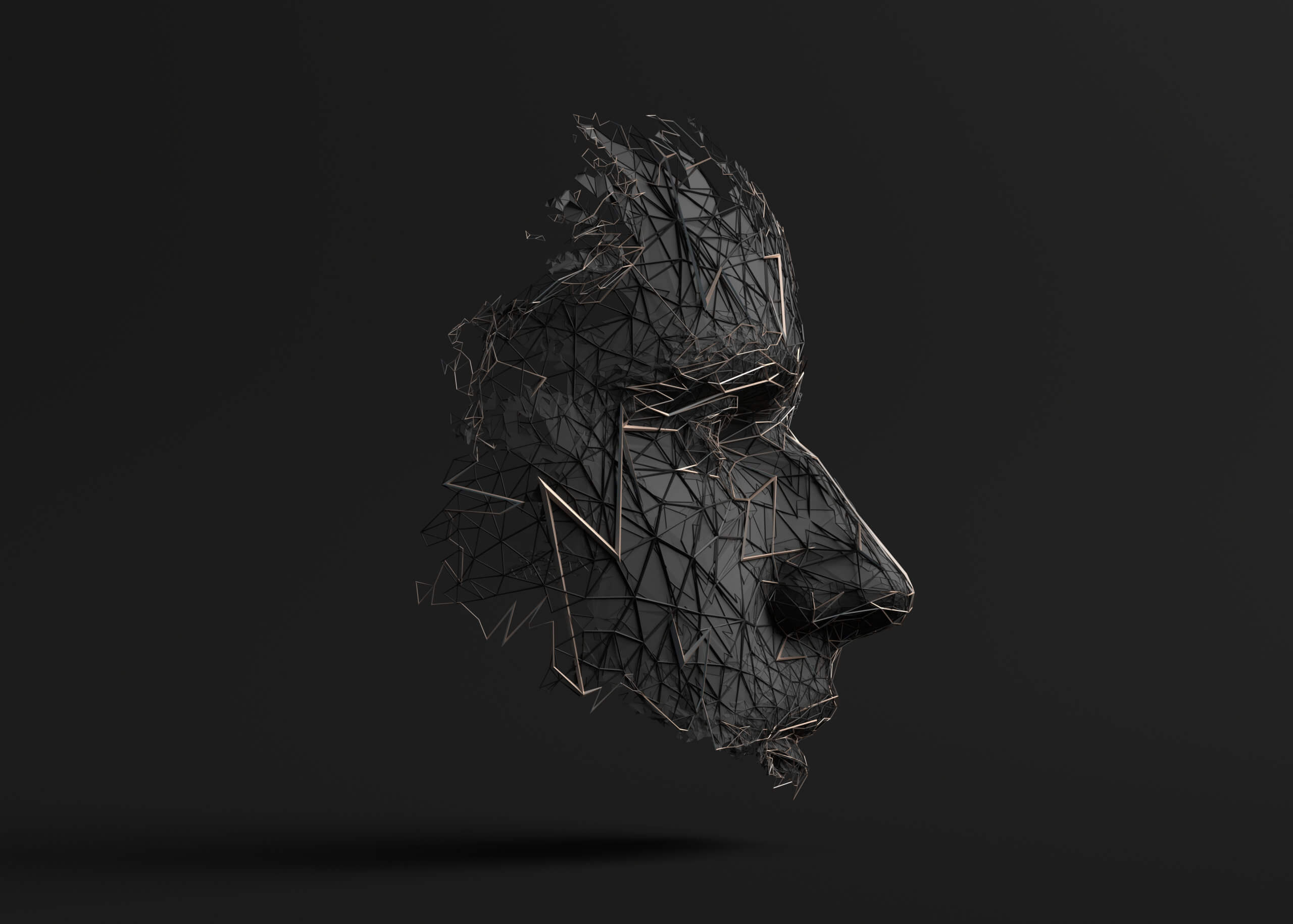
© VAlex/stock.adobe.com
Some unsettling videos of Tom Cruise swept the internet last year. In these viral videos, he does fairly normal things, like swinging a golf club or crunching a lollipop, but something feels off.
The account behind the videos, @deeptomcruise, posts artificially generated “deepfakes.” Deepfake refers to a computer-generated image or video of a person that is nearly indistinguishable from reality.
Recent movies and shows, like the Star Wars franchise, have used cutting-edge technology to either resurrect deceased actors or to overlay younger versions of older actors over their performances. Audiences have generally alternated between feeling disturbed or laughing at these attempts.
But, as the technology improves every year, people are laughing less and less.
We’re being fooled more and more.
We can’t tell the difference between fake and real anymore
A recent study showed AI can now create images of human faces that are nearly impossible to tell if they’re real or fake.
One of the most cutting-edge graphics and AI companies is Nvidia. One of their programs, StyleGAN2, was used in a recent study by Lancaster University to generate images of human faces.
The study found that people were correct only 48 percent of the time when they were told to label the images as real or fake, meaning they could not distinguish between AI-generated photos and the real images.
Even when the experimenter took a new group and trained them beforehand on how to spot the fakes, their accuracy only improved to 59 percent.
Not only this, but the participants were asked to rate on a scale of 1–7 how trustworthy the faces seemed. The completely faked images were eight percent more trustworthy on average.
To create these synthetic images, the program pits two AIs against each other. The first AI randomly puts pixels together into an image. Then, another program penalizes the first AI if the other program can tell the difference between the real and fake images, which helps the first AI make improvements. The program does this over and over until, eventually, random pixels generate a photorealistic image of a face.
To see images of non-real people created by this AI engine, visit thispersondoesnotexist.com. Every time you refresh the page, a new image appears.
How pornography drives the development of tech
While these artificially generated photos may seem like a harmless experiment or a novelty, people use these technologies in corrupt, reprehensible ways already.
According to another recent study, 96 percent of all deepfake videos are pornographic. Pornography is one of the main driving forces behind these innovations. Globally, the porn industry is estimated to be worth between $40 billion and $100 billion dollars. For reference, global box office revenue from movies was around $43 billion in 2019.
Some worry about the creation of false porn based on a real person being used for blackmail, or to get “revenge” on an ex-partner (so-called “revenge porn”). Already, people use deepfake technology to create pornography based on real people, mostly actresses or other famous people. It’s also already been used in propaganda and misinformation campaigns.
Because of these terrifying prospects of abuse, the authors of the study write, “We, therefore, encourage those developing these technologies to consider whether the associated risks are greater than their benefits. If so, then we discourage the development of technology simply because it is possible.”
For a fuller response to artificial intelligence, read “What does the Bible say about AI?”
How did we get here? Immanuel Kant’s argument
This technology seems like a bad idea. So, why are we still pursuing it? It seems to depend on the “post-truth” worldview. Dr. Jim Denison has written about four earthquakes that we cannot see causing a cultural tsunami in his book, The Coming Tsunami. This analogy is again helpful because why we as a society choose to advance this technology is not self-evident.
It seems that our culture does not believe it can have any grasp of “objective” truth, so we can only know “what is true for me.”
This stretches back, in part, to a philosopher named Immanuel Kant from the 1700s. Though his ideas were brilliant, they impacted the world far beyond his original philosophical ponderings. To summarize one of his complex main ideas:
- The concepts of time and space are pre-programmed into our minds; they are not “out there” in reality. We know this because we need to understand time and space before we can perceive anything else. I need to comprehend 3D space before I can comprehend my coffee mug, for example.
- Our most foundational ways of thinking are tied in with time and space.
- This means that our most foundational ways of thinking are dependent on something in our minds that is not “out there” in reality.
- Our beliefs and observations are built on those foundational ways of thinking.
- Consequently, our beliefs and observations (which are built on those foundational ways of thinking) are also dependent on our own mind and not in reality “out there.”
- Thus, we cannot know with certainty what reality “out there” is really like.
In short, because we believe and observe through a lens that we cannot remove, we therefore cannot know what reality is really like “out there.” We cannot know how accurately our perception reflects reality “as it is.”
It’s a curious mind-bender, an interesting, ivory-tower philosophical argument, right? Its effects go far beyond a brain teaser.
Kant’s arguments led to the rise of nineteenth-century German idealism and existentialism, two movements in the history of philosophy that were pivotal for arriving at our present-day “post-truth” culture. We can clearly see Kant’s ideas of what we can know about reality in our culture.
For most, it doesn’t matter if our sexual gratification is “real.” How things “appear to us” is all we can know, or at least to us, all that matters.
Trust in the word
We can lean on God’s design and power to address Kant at a basic level. If God created the universe and our minds, he designed us so that we would be fairly confident in our senses and reason to match with external reality. Obviously, we are finite, so our knowledge will be finite; obviously, we are fallen, so even if we did have perfect “knowledge” of the real world, we would still abuse it.
Although we cannot fully address Kant’s arguments here, we can point to biblical truth.
- Unfortunately, we can now deceive someone’s eyes, not just their ears with words. God says, “He who practices deceit shall not dwell within my house” (Psalm 101:7). We should pray that God would “keep deception and lies far from [us]” (Proverbs 30:8).
- The use of pornography is utterly sinful, and its effects are destructive to love and relationships. Anything outside of God’s design for sexuality should be rejected. We must “flee from sexual immorality. Every other sin a person commits is outside the body, but the sexually immoral person sins against his own body” (1 Corinthians 6:18).
- We must be discerning and wise in a time when discernment, especially online and in social media, is becoming more difficult. Steve Yount writes on this in “How to seek the truth when it comes to fake news,” and I give responses from Proverbs on how to navigate social media.
- We should press for a policy in the government that limits this technology. Our current laws are outdated and have not kept up with the rapid technological development (1 Peter 2:13–14).
- God has revealed the ultimate source of truth in his word and in his son, Jesus (John 14:6). We can be confident that the universe was created according to order (John 1). We must exercise humility in what we don’t know while also not giving in to the cultural idea that there is no truth.
These principles are eternal truths, no matter the technological developments.
The AI-generated images were perceived to be “more trustworthy” than the real people, which begs the question: Who do you trust?
Let’s not trust in social media, technology, political parties, or even ultimately in other people.
Instead, let us trust the truth of God’s word.











